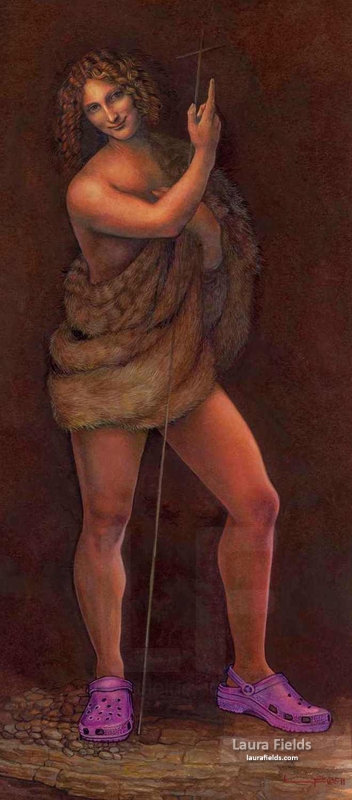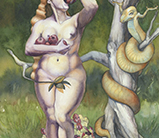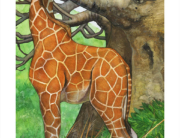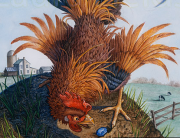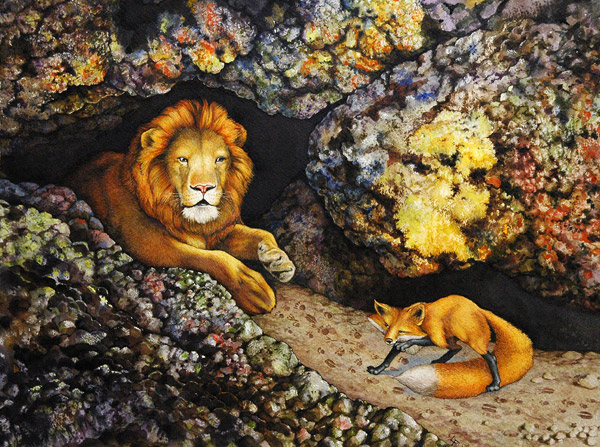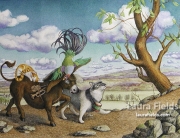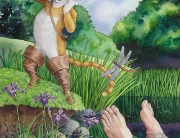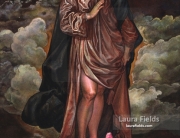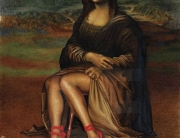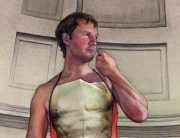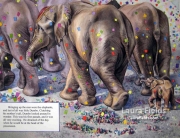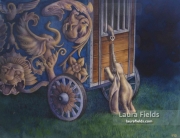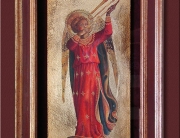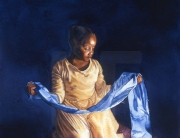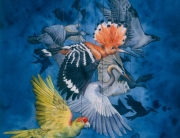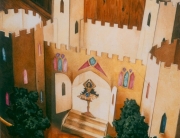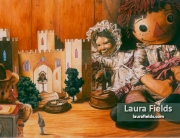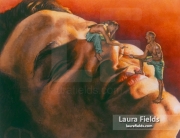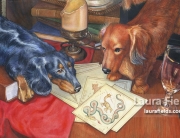St John the Baptist Wore Fake Crocs
When Leonardo died his possessions were pitifully few. He had three of his paintings, the Mona Lisa, the Virgin and St. Anne and his final painting, that of St. John the Baptist. This painting dates from his final years in Rome, around 1509-1516.
Many people are critical of this work by DaVinci, finding it a disturbing representation of a character normally portrayed as gaunt and fiery, living in a desert and surviving on a diet of locusts and honey. In Leonardo’s painting St. John seems almost to be a hermaphrodite. He has a womanish arm bent across his breast, his finger raised towards heaven, and that same enigmatic smile so admired on the face of Mona Lisa, a smile which can be seen in other Leonardo paintings like that of St. Anne. His face is almost faun-like and framed by a glorious cascade of curls. The finger pointed towards heaven was to appear quite often in Leonardo’s work (the Burlington House cartoon is another example) and denotes the coming of Christ.
I first saw this painting when I visited the Louvre, in Paris. It hung near the Madonna of the Rocks, another of my DaVinci favorites, and was nearly impossible to get a good look at. The painting is so dark that making out detail was very difficult. But even with the glare on the protective glass, the glossy oil, and the dark, possibly dirty painting surface, John the Baptist’s gaze was captivating and impossible to ignore. The standard portrayal of John the Baptist as an older man with fur hides wrapped around him and a heavy wooden walking stick was absent here. This was a young androgynous man, with beautiful ringlets in his hair and a knowing smile very much like the Jaconde. How can one ignore this coy religious icon? I had to find a way to include his lovely visage in my series of altered classic paintings. I would extend his torso to a full length portrait complete with fake purple crocs (We are dealing with a man that works in and around water…).
This painting is painted entirely with watercolors. The paint is applied very heavily in places to create an almost opaque burnt umber tone that mimics that of the original painting. It is one of four in my “shoe series.” All four pieces are reinterpretations of classic paintings.

